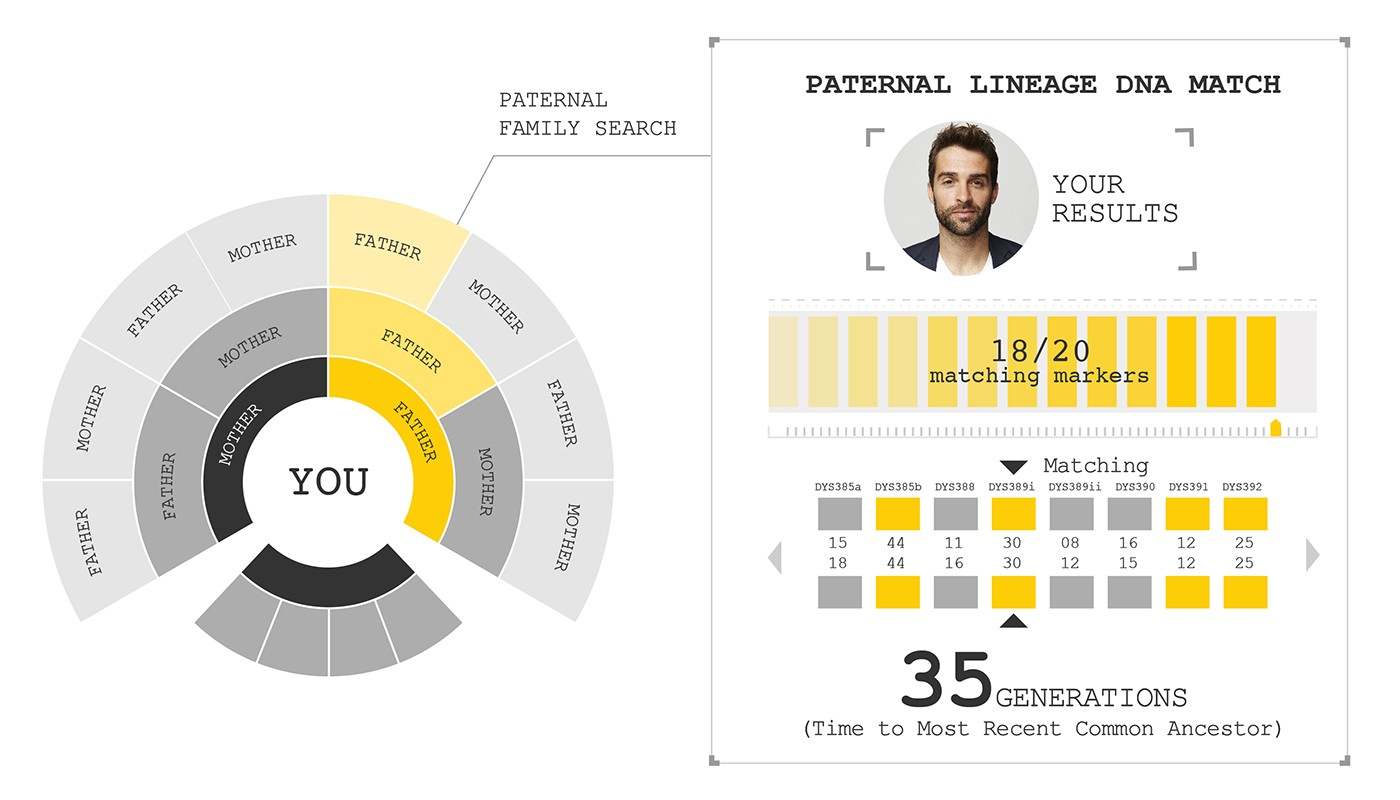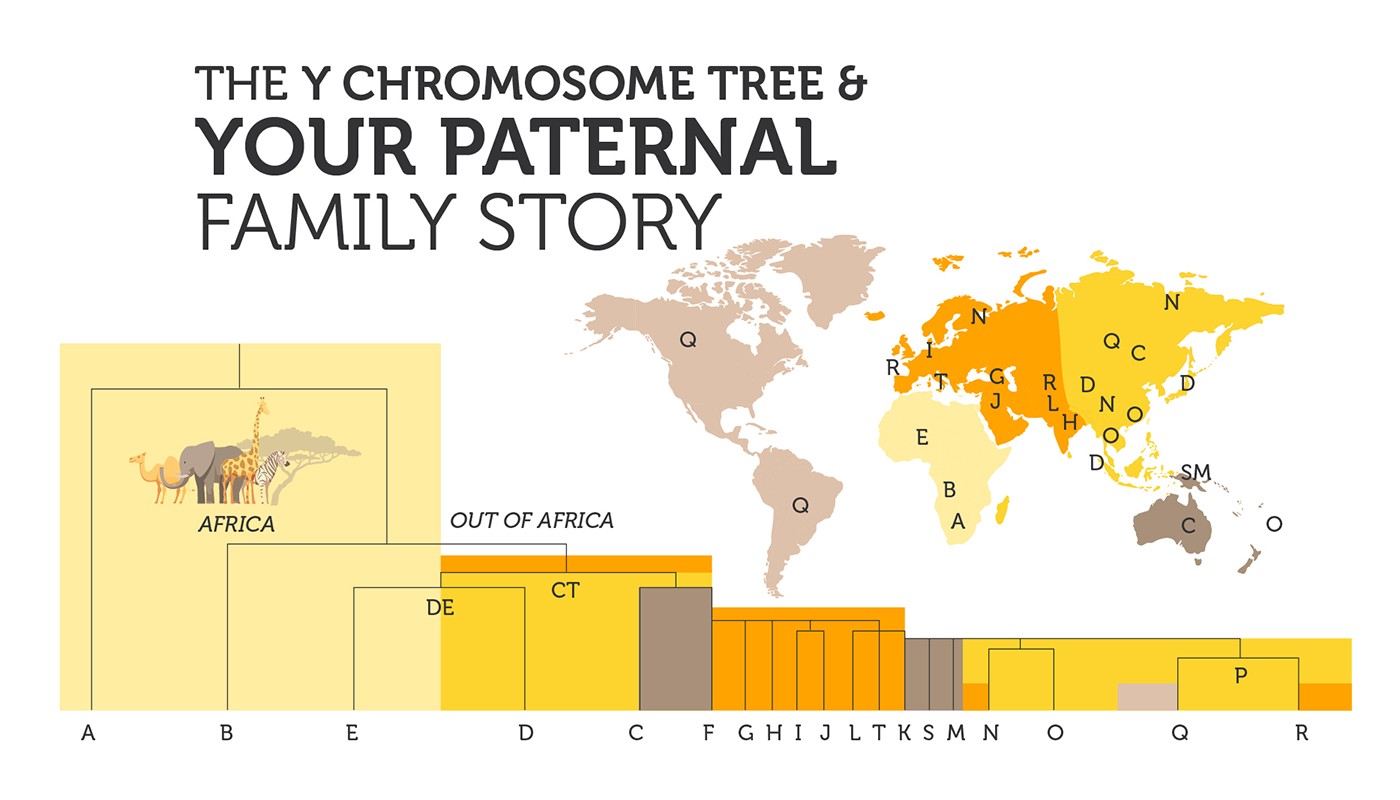Whether it’s eye color, height or weight, outward physical features make us look uniquely different from each other. But, our DNA, the hereditary material that carries the information on how to build a human being, tells quite a different story.
Genetic variation and ancestry
If you compare the DNA between two people from different parts of the world, 99.5% of the genetic code is identical. Just as the “out of Africa” theory predicts, DNA studies show that all modern humans originated from a single population of people in Africa over 100,000 years ago, and eventually spread around the world.
As humans migrated around the world, they had to adapt to differences in climate, lifestyles and natural disasters. Many of these adaptations were only possible because our DNA has the ability to change.
These same random beneficial changes are also useful for tracing our ancestral origins, and to reconstruct the genetic family tree of mankind.
Our “genetic parents”
Using differences in our DNA called single nucleotide polymorphisms (SNPs), geneticists have identified the genetic mother and father of all modern humans. Nicknamed “Mitochondrial Eve” and “Y-chromosomal Adam,” these genetic “parents” lived over 100,000 years ago.
A SNP is a change at just one nucleotide – one of the building blocks of our DNA. SNP markers have a very slow mutation rate, making them useful for tracking genetic changes that happened more than 1,000 years ago.
Another genetic marker, known as a short tandem repeat (STR), has a much faster mutation rate. These markers are useful for tracing more recent ancestry.
Paternal and maternal ancestry
SNPs and STRs occur throughout the genome – in all the autosomal chromosomes, and the X and Y sex chromosomes. Females have two X chromosomes, one inherited from each parent. Males have one X chromosome (inherited from their mother) and one Y chromosome (inherited from their father).
Paternal ancestry is traced by SNP and STR markers found on just the paternally-inherited Y chromosome. These markers are passed down unchanged from father to son, and can be used to trace patrilineal ancestry all the way back to the genetic forefather of all modern men – “Y-chromosomal Adam”.
Maternal ancestry can also be traced, but this is through a different analysis of mitochondrial DNA.
The Y chromosome tree
An evolutionary tree is like a family tree. It shows all of the different families that arise from a single person. Using Y-DNA analyses, scientists have generated a patrilineal ancestry of all modern men. “Y-chromosomal Adam” is at the root of this tree.
Haplogroups identified by letters (A to T) are the main branches of this tree and can be thought of as ancient family groups that existed thousands of years ago. These family groups were defined based on Y-DNA SNP profiles. Most haplogroups have a geographical location of origin. For example, haplogroup A is largely restricted to Africa, whereas haplogroup F may have originated in South Asia. Haplogroups can be further divided into finer sub-branches known as subclades.

What’s your DNA ancestry story?
Finding out your Y-DNA haplogroup allows you to retrace the steps of your ancient paternal ancestors, and take a journey back through time.
The first step for determining your Y-DNA haplogroup is a Y-DNA STR test. Often, a Y-STR test is all that is required to accurately determine your haplogroup. Y-DNA STR analyses also have the benefit of providing data on more recent ancestors, and might even show if you are related to a famous person!
You can confirm your haplogroup and determine your subclass with a Y-DNA SNP test. The Y chromosome tree keeps expanding as more Y-DNA sequences become available. Maybe one day scientists will be able to tell the entire story of our ancient origins.
Start your DNA journey today with the DNA Paternal Ancestry Test.















